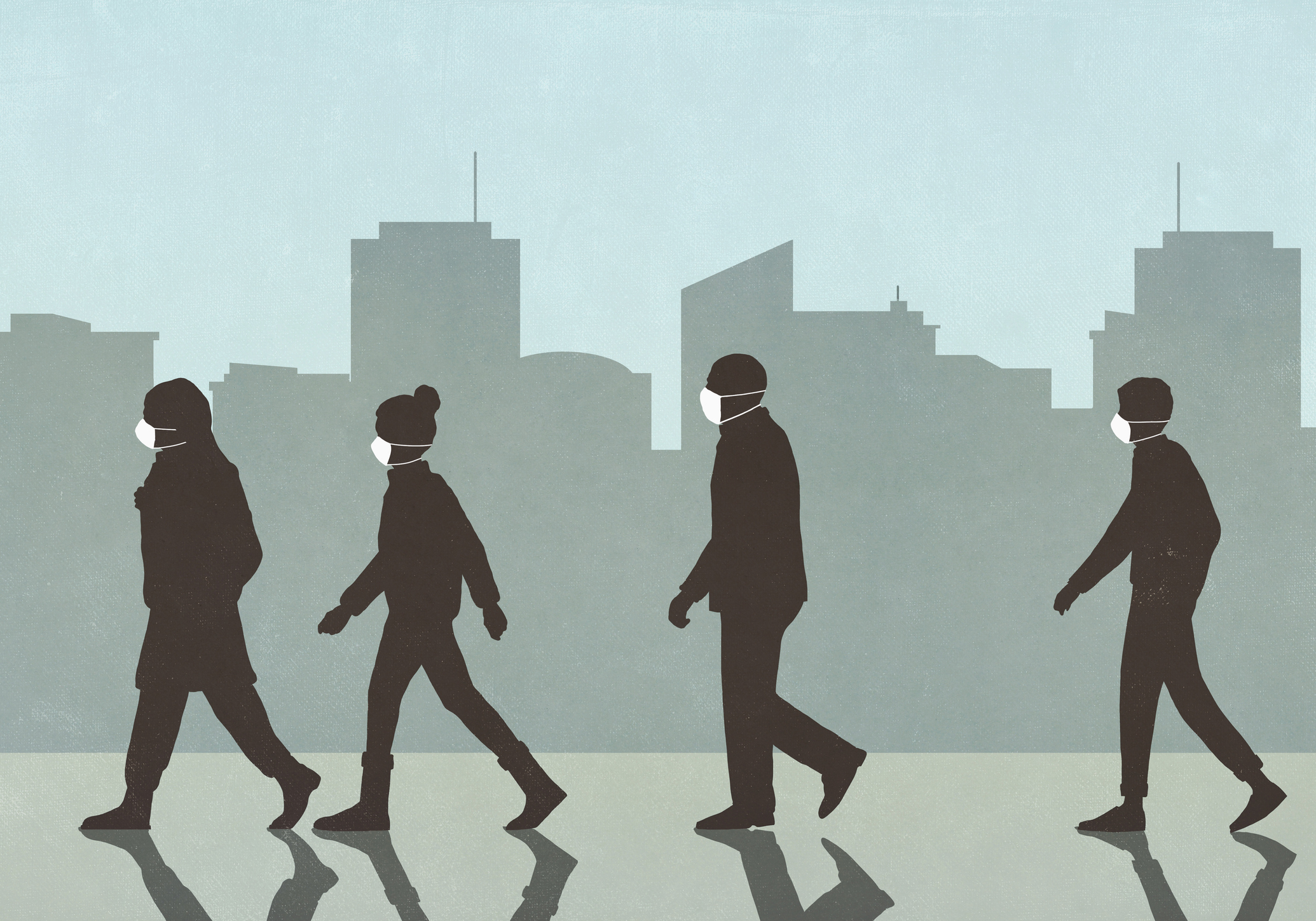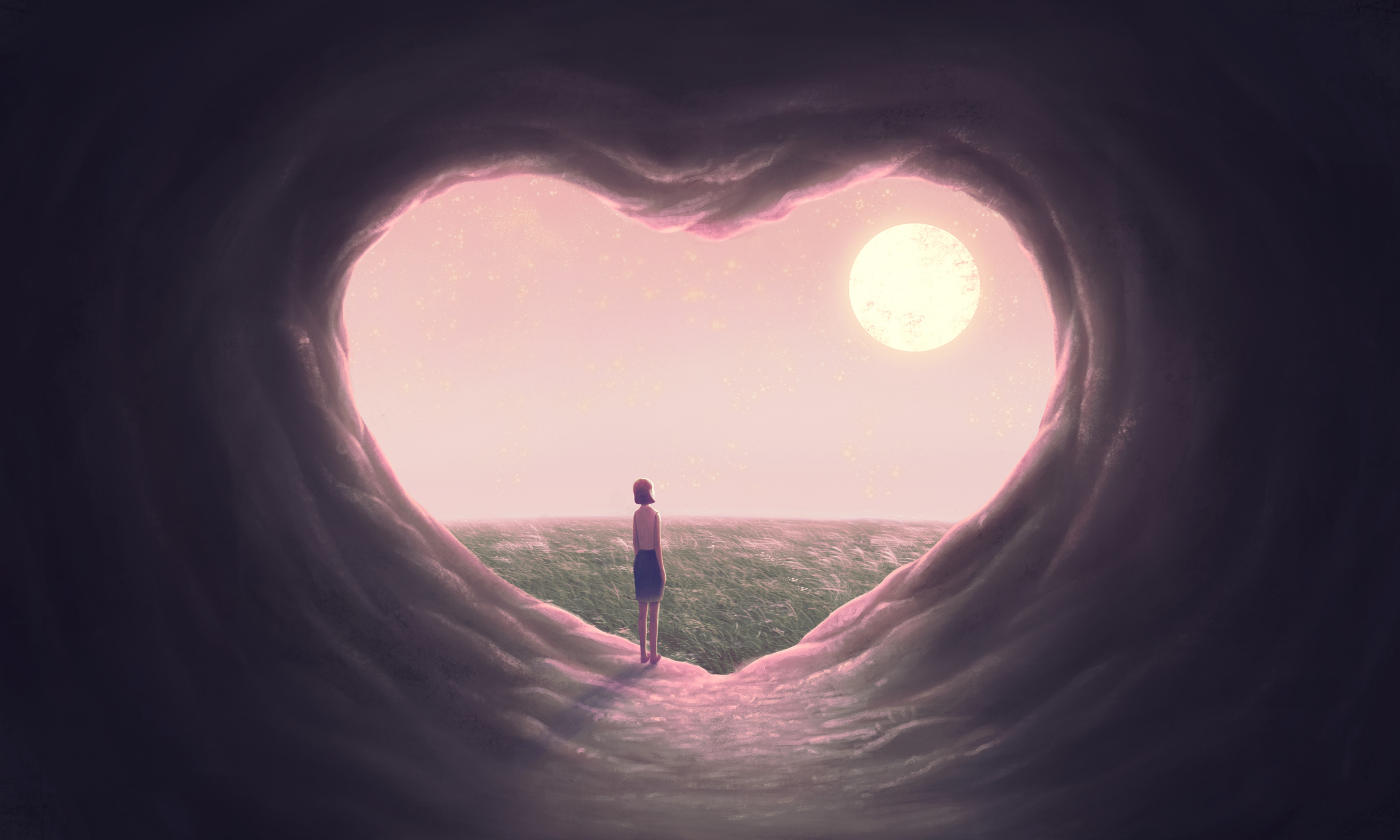Thomas McDade, a biological anthropologist at Northwestern University, still remembers an advertisement for cold medicine he saw in late 2019. The ad showed a visibly sick businessman walking through an airport, “and the message was, ‘You can solider through this. You can make it,’” McDade says.
That message didn’t age well. Only a few months later, the virus that causes COVID-19 began spreading across the globe, prompting health officials to beg people to stay home no matter what—but especially if they felt sick. Suddenly, soldiering through an illness wasn’t seen as admirable, but irresponsible, selfish, and dangerous.
Since then, countless op-eds and articles have argued that the pandemic would usher in a “new normal” where people were more thoughtful about disease, companies were more generous with sick time, and everyone stayed home when unwell. It looked like it was happening, at least for a while. Millions of people worked and learned from home, many for the first time; comparing symptoms became a national pastime; and photos of at-home test strips crowded out vacation shots on social media.
But now, with the pandemic effectively over—at least in terms of the federal response, if not epidemiologically—it seems that the promised new normal never fully materialized.
Eric Shattuck, an assistant professor of research at the University of Texas at San Antonio, studies “sickness behavior:” the constellation of behavioral changes that people adopt when they’re ill, like lethargy, social withdrawal, and decreased appetite. Much of sickness behavior is biological, driven largely by inflammation in the body. But the extent to which people perform these behaviors is informed by cultural norms about how we’re “supposed” to act when sick, Shattuck says.
Though pushes to stay home and “flatten the curve” changed behavior early in the pandemic, they weren’t enough to enduringly alter dominant cultural messages about sucking it up and soldiering through, Shattuck says—in large part because they weren’t backed up by supportive policy changes, like expanded access to paid sick leave and affordable child care.
“We may see that people are paying more attention and listening to their bodies more,” Shattuck says, “but if the conditions aren’t there for them to be able to stay home or work from home…it may not actually change the large-scale behaviors.”
The start of the pandemic brought a flurry of new sick- and family-leave policies, but many were temporary or didn’t apply equally to all workers. As of March 2022, 77% of private-industry workers had access to paid sick time, only slightly more than the 75% who did in March 2020, according to the U.S. Bureau of Labor Statistics (BLS). But that top-line statistic doesn’t tell the whole story.
While 96% of people working in the management, business, and financial sectors had access to paid sick time in 2022 (along with the option to work remotely in many cases), only 62% of service-industry workers did—up slightly from 59% in 2020. Only about 40% of the lowest-paid private-industry workers had paid sick time in 2022, versus nearly all of the highest earners, BLS data show.
Overall, during the first two years of the pandemic, only 42% of work absences related to illness, child care, or personal obligations were compensated, according to a report from the Urban Institute, an economic and policy research institute. Many workers, especially those least able to afford it, still have to choose between getting well and getting paid. It’s hard to fault people for choosing the latter.
Even people who have paid sick time often work through their illnesses, and that didn’t change during the pandemic. In some respects, says Kai Ruggeri, an assistant professor at the Columbia Mailman School of Public Health who studies population behavior, the rise of remote work actually made it harder for people to justify taking sick time. Lots of people seemed to think, “‘What’s the difference, if you get some things done from your laptop in bed?’” Ruggeri says.
In 2020, researchers surveyed people with COVID-like symptoms about whether they worked while sick. (About a quarter of them ended up testing positive for COVID-19, while the rest had other respiratory illnesses.) About 42% of people with COVID-19 worked either remotely or in-person while sick, and 63% of people sick with another respiratory illness did so. One 2023 study even found that, within a group of about 250 health care workers with symptomatic COVID-19, half worked at least part of a day anyway.
That may be because many workers still feel pressure—spoken or unspoken—from their employers to show up no matter their health status, says Terri Rhodes, CEO of the Disability Management Employer Coalition, which provides employers with guidance on workplace absences. The pandemic didn’t change that. “The general feeling that I get from employers is, ‘We just want to be done with [the pandemic],’” Rhodes says. “There’s a big push right now for productivity and earnings and ‘just get back to work,’ as opposed to mental health, well-being, taking sick days.”
The old normal—the one valuing stoicism, productivity, not stopping for a second—has proven hard to uproot. But there have been changes around the way we think about illness: the fact that people are even talking about sick-leave policies and forming opinions about the merits of vaccinations and masks (for better or for worse) suggests there’s been a culture shift around health and sickness, Ruggeri says.
As director of the Annenberg Public Policy Center of the University of Pennsylvania, Kathleen Hall Jamieson oversees research projects that assess how much the U.S. population knows about health and science. Over the course of the pandemic, Jamieson says, she’s seen two contradictory things happen in parallel: overall scientific literacy grew, even as more people began to believe conspiracy theories and misinformation.
The fact that most of the U.S. population got vaccinated and wore masks at the height of the pandemic suggests most people generally understood how the virus spreads and how to slow transmission, Jamieson says. In a survey fielded around the time COVID-19 vaccines became available to the general public, around three-quarters of respondents correctly answered questions about the safety and efficacy of the shots. Results like those show “an astonishing level of public literacy about a topic that we knew nothing about in January 2020,” Jamieson says.
Concepts once foreign to most of the general public—like incubation periods and airborne transmission—also became part of regular conversation. “Nobody knew what an R value was” before, Ruggeri says. “I had people calling me, asking me to explain it to them.”
For many people, the pandemic was a first introduction to a “blind spot” in the medical world, as a 2022 research review put it: post-acute illness. Viruses ranging from influenza to Epstein-Barr can cause potentially debilitating long-term complications, but that reality went mostly unnoticed until scores of people developed Long COVID symptoms—ranging from brain fog and memory loss to chronic fatigue and pain—within roughly the same period of time. For some people in both the medical field and the general public, these long-term symptoms reframed what a seemingly “mild” illness could do.
In addition to increased scientific literacy, Dr. Yuka Manabe, a professor at Johns Hopkins Medicine who specializes in infectious disease, has noticed a stronger desire for “diagnostic certainty” among patients. In 2019, someone with a respiratory illness might have been content to say they were sick and leave it at that, but many patients now want to know exactly what they have and where they caught it. “I hear a lot of people say, ‘I have a cold, but don’t worry because it’s not COVID—I tested myself,’” Manabe says.
The unprecedented availability of at-home tests likely contributed to that desire for certainty—and consumer demand for COVID-19 diagnostics seems to have carried over to other conditions, too. In a 2022 survey, 82% of adults ages 50 to 80 said they were at least somewhat interested in using at-home tests in the future. And they may indeed get the chance. In February 2023, the U.S. Food and Drug Administration (FDA) authorized the first combined at-home influenza and COVID-19 test.
But while COVID-19 turned some people into amateur disease detectives, many others—about 40% of U.S. adults, according to federal data—delayed or avoided health care during the pandemic. One 2022 study found that lower-income people and those with preexisting conditions were likely to delay care in 2021, which suggests that financial stress and fear of the virus played a role. Another study from 2022 found that people were more likely to skip doctors’ visits during the pandemic if they’d previously had bad experiences with medical care.
It makes sense that people who’d had previous bad experiences—a group that tends to include people of color, lower-income people, those without insurance—may have shied away from the medical establishment during the crisis, even as others literally trusted it with their lives. Throw in partisan polarization, which made even basic practices like masking and vaccination feel like political statements, and it’s no wonder that people responded very differently to the same health threat. How could there be a single new normal when the old normal varied so much by race, class, gender, and age?
Despite the divisions, however, Jamieson says she’s optimistic that at least some of the knowledge gained during the pandemic will stick around, ready to be deployed if and when there’s a similar threat in the future. For many people, behaviors like masking and handwashing became habitual during the pandemic, and “you don’t unlearn habitual behaviors,” Jamieson says.
Although far fewer people wear masks now than at the height of the pandemic, Manabe says she’s noticed that people are now quicker to wear one when they have respiratory symptoms—a sign, she thinks, that people understand how pathogens spread and want to protect others.
“This kind of social altruism is really welcome, from my point of view,” Manabe says. “We’re trying to move forward as a society in the post-COVID era.”
 We know where we have come these past some 36 months but like always we’re not all that clear to just exactly where we are as if it’s still yet to be determined.
We know where we have come these past some 36 months but like always we’re not all that clear to just exactly where we are as if it’s still yet to be determined.
It seems like the World has not just turned upside down but actually changed its Shape. The Caring Catalyst in us has either become more Caring or less of a Catalyst for a loving change. . .

Did this pandemic actually really change us. . . Was it for the better;
was it for the worse or really, is it just business back to usual once again? It all really not only determines how we normally become, but hopefully continue to be as a Caring Catalyst, that we always were, and still are, and always hope to be. . .
Or maybe that’s the real Pandemic, One with no vaccine or protected by the safest of Masks; The One that separates us; keeps us apart; sheltering out of place, forever out of place. . .

































